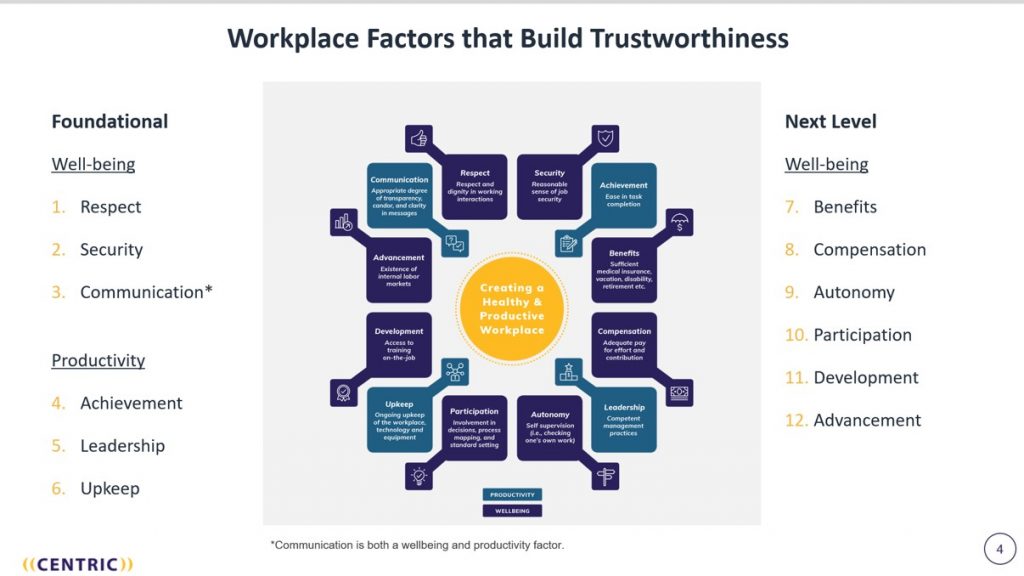We share insights from the latest CIO meet-up, including their thoughts on moving forward with the hybrid workplace.
It’s both amazing and not at all how attitudes have changed towards remote work over the past 15 or so months. Over that timeframe, the CIOs I meet with have gone from active execution of return to office plans last July to grudging acceptance of remote work temporarily in the fall to active execution of hybrid workplace plans this spring.
But now, there’s definitely a stronger feeling of permanence to this shift that staff and leadership have realized over this past year, along with noticing a new paradigm is taking hold. In fact, according to Microsoft’s 2021 Work Trend Index report, 73 percent of employees want a hybrid workplace, and 40 percent are considering a job change in 2021.
Furthermore, McKinsey notes in its What Executives are Saying about Hybrid Work report, 9 out of 10 companies will adopt a hybrid work environment, but only 32 percent have communicated their vision or have a detailed plan in place.
Keeping Employees in a Remote and Hybrid Work World
To be sure, not everyone is on board with remote work being a permanent part of their company’s makeup. And that attitude is concentrated at the senior executive level, especially among CEOs, CFOs and COOs – but CIOs, not so much. They’ve always realized that, with technology, their teams could be every bit as productive wherever they were versus being in an office.
As they’re working through the hybrid model, they’re coming to some concerning realizations.
- Staff attrition is very likely to increase
- Talent attraction is going to be much more competitive
- Traditional methods to retain talent need to change.
Recently, my colleague from our People and Change Practice, Tayo Switzer, joined me to host a gathering of local CIOs to share insights on the issue. We discussed a few key issues currently affecting or causing attrition, including:
- Hero Mentality and Burnout
- Suitable workspace
- Isolation
- Workloads.
Additionally, external factors are playing a huge role, including things such as:
- Those who have long or difficult commute times are pushing back hard on returning to the office at all
- Out of market employers targeting local companies
- Salary increases of 30 percent or more are not uncommon. CIOs have also noticed a trend among associates with relatively shorter tenure at the company, say less than five to 10 years. Those employees seem not to be as fully invested in their career with the company and not vested sufficiently in an ESOP or similar – basically, they’re not as committed.
Developing Real Retention Solutions
A typical and somewhat natural reaction is to try to throw money at the issue with increases or bonuses. But according to Tayo, that approach doesn’t get to the true underlying issues of respect and value.
He said, “A breakdown of trust is usually the problem. Money may get their attention, but the problem remains. They don’t feel valued or respected, or they can’t get their work done. And they don’t see it getting better. Find out what they need to trust you and the organization.”
Along those lines, some of the other tactics to keep employees on board these CIOs shared include:
- Building deeper relationships at all levels in their organization, from direct reports down to interns
- Spending generously on home office set-ups (desks, chairs, monitors, etc.)
- Philosophically moving from controlling and compliance to supporting success and goal attainment
- Focusing on outcomes and results rather than traditional measures of productivity
- Providing rewards and advancement for achievement, not visibility
- Establishing defined remote work policies now
- Offering flexibility on a case-by-case basis.
Fifteen percent of staff won’t be happy with anything, 15 percent will be happy with anything. So, focus your efforts on that middle 70 percent.
Conclusion
Finally, traditional talent attraction efforts must also change, aligned with the company’s hybrid workplace model and policies. Candidates are beginning to ask about those policies during the interview process and are moving on from those that aren’t supportive of their interests. Recruiting from out of the market, specifically for remote positions, must also make up a greater percentage of attraction efforts. Propagating and expressing a differentiating corporate culture is going to be difficult when seeking out of market talent. Successfully doing so will lead to a clear competitive advantage, however, if done well.


